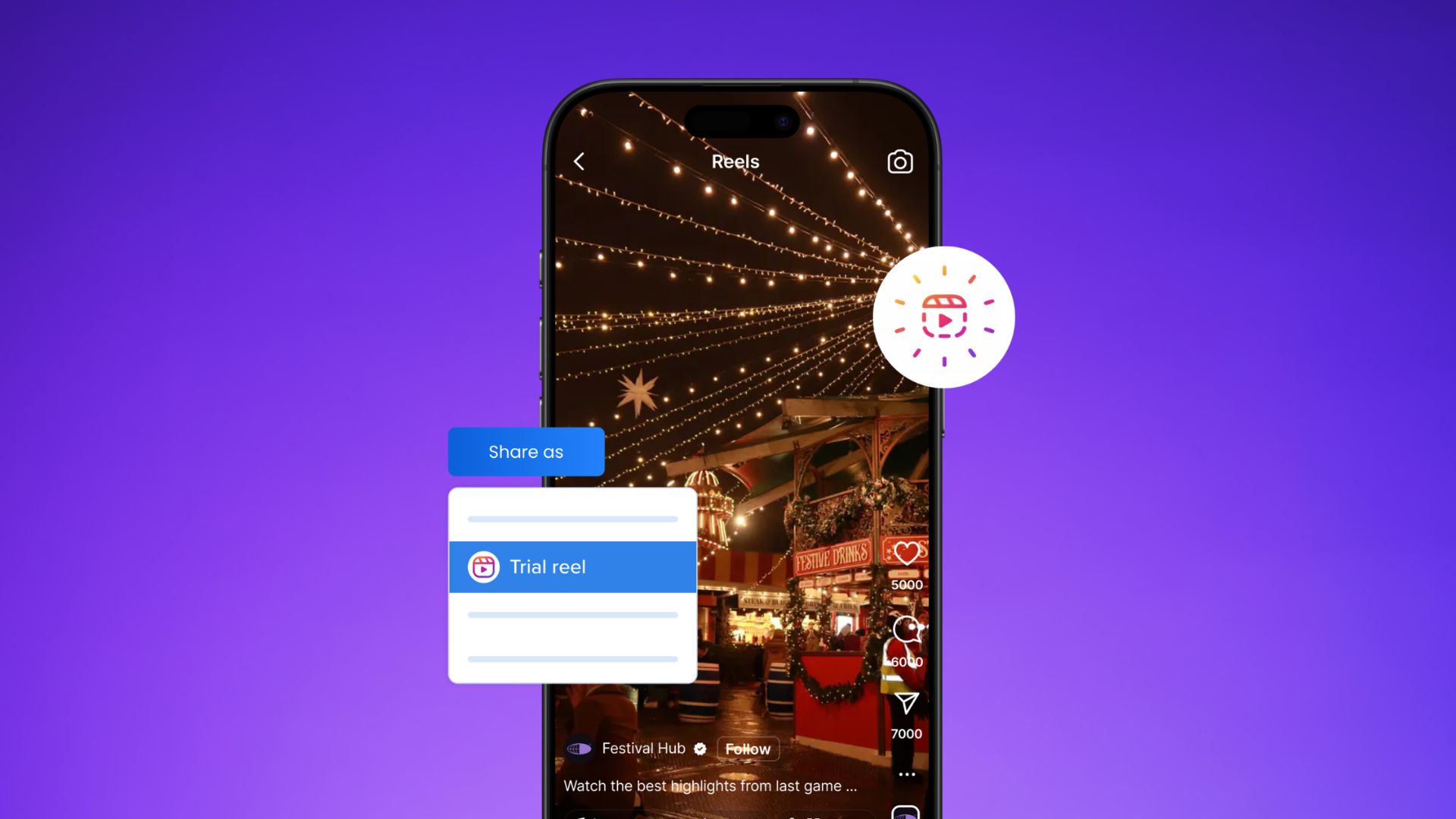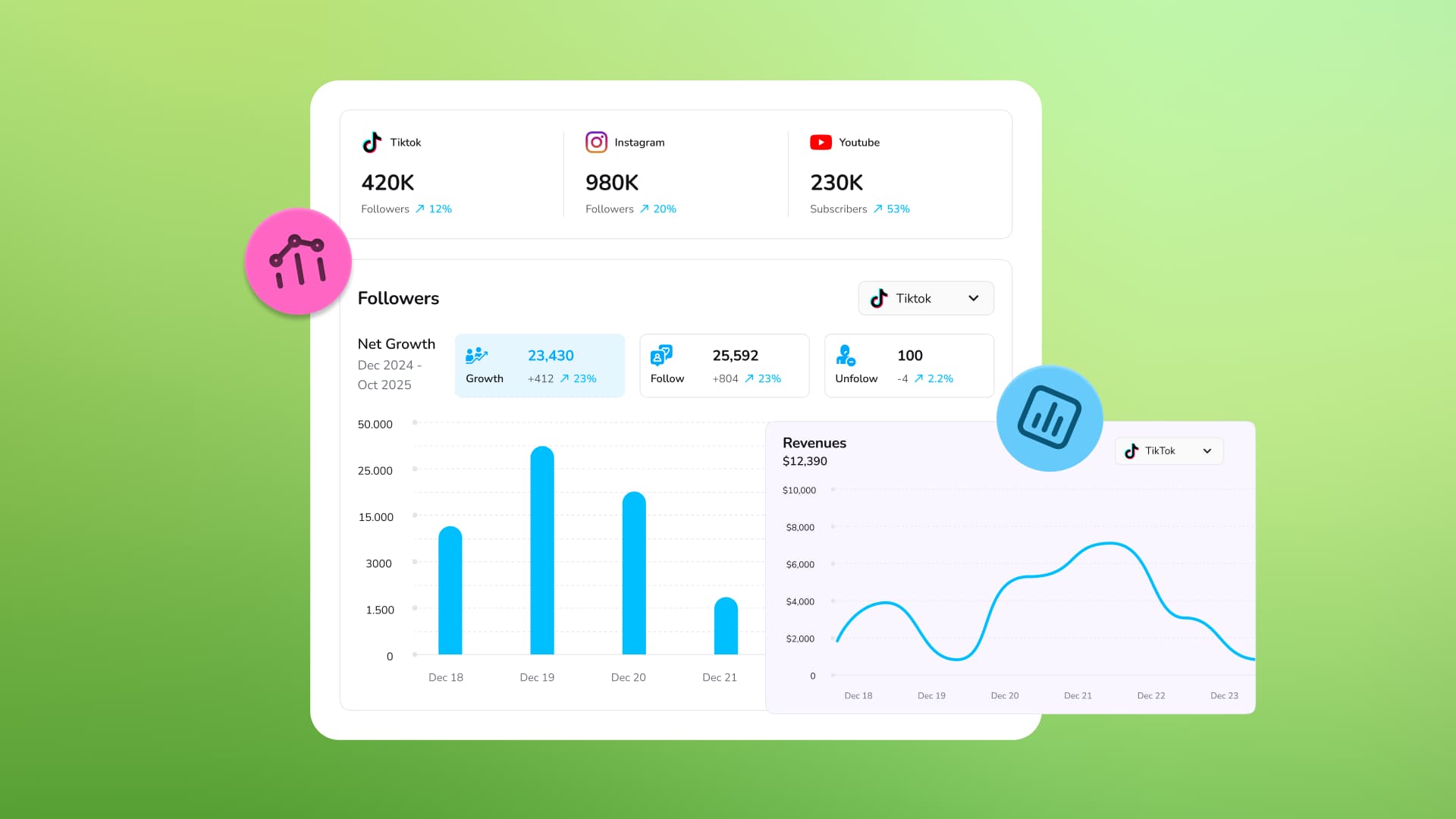New

Turn Your DMs Into Lead Gen!
Learn how to collect lead data from your DMs such as email addresses, phone numbers, and more right from your social inbox. If you are not yet automating your DMs your competitors are outpacing you.

How Something Social Saved 75% of Their Time and Increased Revenue by 15%
See how a fast-growing agency improved operations, cut down hours of manual work, and unlocked new revenue opportunities with Vista Social.
New

50 Unique Social Media Ideas for Consistent Content Creation
Discover 50 unique social media post ideas to engage your audience, grow your brand, and maintain a consistent content strategy with ease!
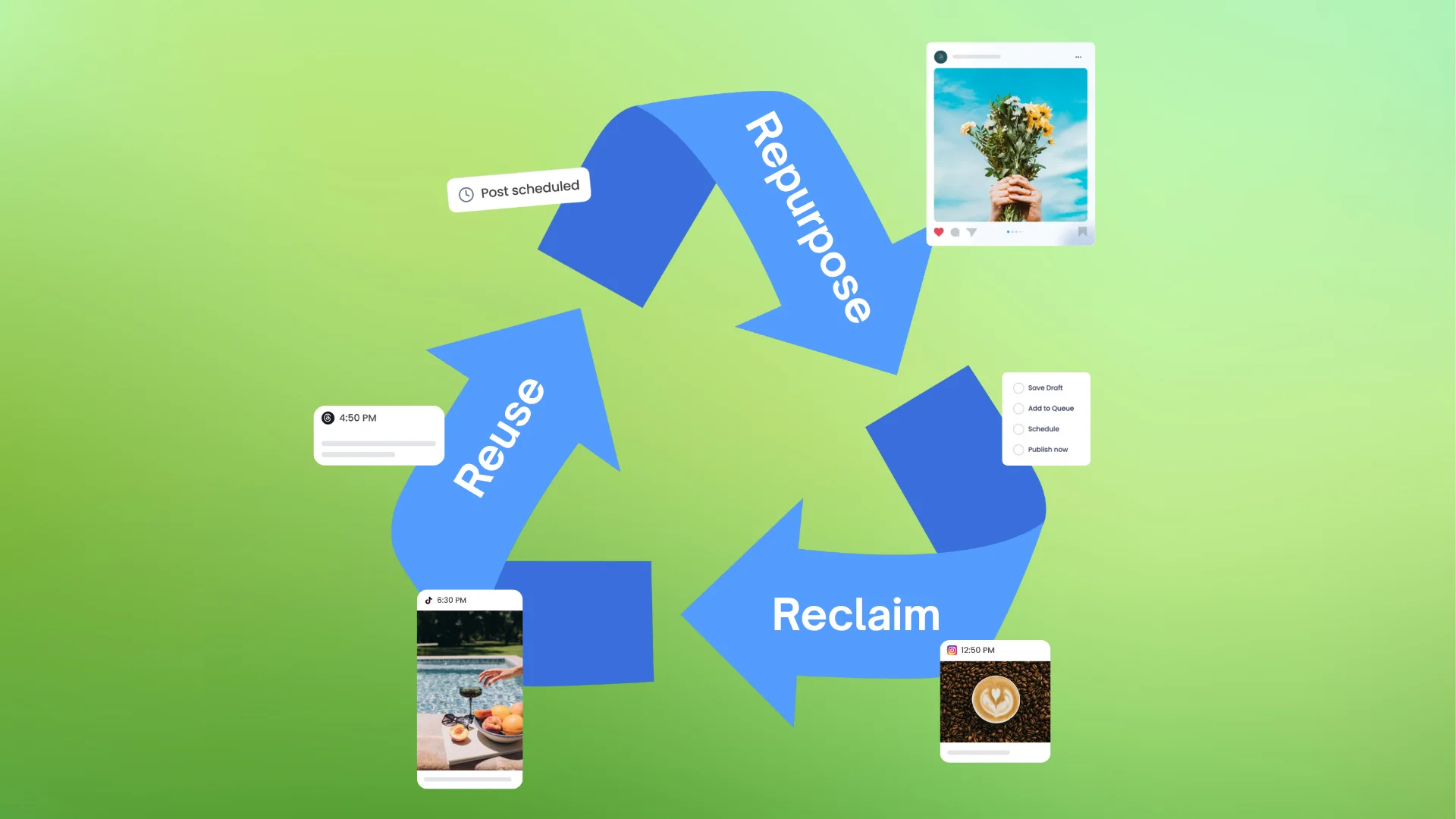
Mastering Content Reuse: The Key to a Consistent and Sustainable Posting Strategy
Published on October 24, 2025
8 min to read
Social Media ROI Guide: How to Track & Grow Your ROI
Summarize with AI


Table of Content

Peter Drucker once dropped a wisdom bomb that many marketers and business owners now embrace. He said, “If you can’t measure it, you can’t improve it.”
There is so much truth to that statement. And it applies perfectly to social media marketing, a strategy that often doesn’t have easily quantifiable results.
But that doesn’t mean you can’t measure it. It just takes a more strategic approach. In this guide, we’ll show you exactly how to measure social media ROI so you can finally prove your social media efforts are worth every penny.
We’ll cover the basic ROI formula, metrics that actually matter, and the tools that make tracking super easy—plus some other ways to keep track of your social media strategy’s impact.
Table of contents
What is social media ROI?
Social media return on investment (ROI) is the value returned from social media marketing. It measures social media campaigns’ benefits compared to the total time, effort, and money invested.
Simply put, social media ROI measures the results of your marketing efforts compared to its costs.
Measuring ROI tells you if your social media strategy generates positive outcomes based on your clients’ marketing goals.
The social media ROI formula and key metrics
You can use this formula to calculate social media ROI: [(Return – Investment) / Investment] x 100.
- Return = Revenue generated from your campaign
- Investment = Expenses like hours worked, content production, ad spend, etc.

Your brand profits from social media campaigns if the value exceeds zero percent. An ROI below zero percent means you or your clients are losing money.
However, the formula above is only used for a basic ROI calculation.
To get more accurate and in-depth calculations, you must look at multiple social media ROI metrics, such as engagement and impressions, and compare them against the campaign’s cost.
Some of the key metrics to track to determine social media ROI include the following:
- Revenue attribution
- Conversions
- Customer acquisition cost (CAC)
- Customer lifetime value (CLV)
- Brand awareness
- Engagement rate
- Reach
- Follower growth
- Earned media value (EMV)
Let’s look in more detail at these key ROI metrics.
First, revenue attribution and conversion tracking forms the foundation of measuring social media ROI. This means tracking how social media contributes to actual sales through:
- Direct purchases from social commerce features
- Sales from people who clicked through from social posts
- Discount code usage from social campaigns
- Revenue from leads generated through social media
Next, customer acquisition cost (CAC) from social channels helps you compare social media to other marketing methods. For instance, if it costs you $30 to get a customer through social media but $150 through Google ads, you know where to focus your budget.
Additionally, customer lifetime value (CLV) impact matters because social media often attracts loyal customers who stick around and buy repeatedly. These customers might spend less initially but way more over time.
Furthermore, brand awareness and sentiment improvements can be tracked through:
- Brand mention increases
- Share of voice compared to competitors
- Sentiment analysis of social conversations
- Branded search term growth
Next, lead generation and qualification metrics are crucial for businesses with longer sales cycles:
- Email newsletter signups from social media
- Demo requests and consultation bookings
- Contact form submissions with social media sources
- Sales qualified leads (SQLs) attributed to social efforts
Looking at your basic social media performance metrics like engagement, reach, and follower growth is also extremely important. This shows how many people you’re reaching with your content, plus how many people your content is resonating with.
And finally, looking at the earned media value (EMV) of your social media presence shows you how much you’d have to pay via paid advertising to reach the same number of people that your organic content is finding.
Why understanding social media ROI is important
Tracking social media ROI is critical for several reasons:
- You’ll get data-driven insights to know what works based on social media metrics that matter most to your clients
- You can determine where your and your clients’ time, money, and resources are best spent to drive expected results
- Justify your clients’ investments and advocate for additional budget and resources for social media marketing strategies when necessary
- You’ll have valuable insights to help your clients adapt to market changes and trends quickly
Understanding ROI bridges the gap between your clients’ social media marketing efforts and expected business outcomes.
How to track social media ROI
You can track and measure your clients’ social media ROI using spreadsheets and formulas.
However, this can involve a lot of manual processes, which are time-consuming and energy-draining. Plus, it can be open to human error.
Using reliable software or tools is the best way to track and analyze social media ROI. Follow along with our five-step process to get started.
Step 1: Define clear goals and KPIs
Start by aligning your social media goals with bigger business objectives. However, don’t just say “increase engagement”—get specific about what success looks like.
Let’s cover some common goals so you can find ones that resonate with your overall objectives.
Brand awareness goals:
- Increase branded search traffic by 25%
- Grow share of voice by 15% compared to competitors
- Boost brand mention sentiment from 60% to 75% positive
Lead generation goals:
- Generate 200 qualified leads per month through social content
- Achieve 15% of total website traffic from social channels
- Convert 5% of social media followers to email subscribers
Sales goals:
- Drive 10% of total revenue through social media attribution
- Maintain customer acquisition cost under $50 from social channels
- Increase average order value from social traffic by 20%
Step 2: Set up proper tracking and attribution
This is where the magic happens—proper tracking lets you see exactly which social efforts drive results.
First, UTM parameter setup is your first step. Use Vista Social to easily set up your URL tracking parameters within seconds. Head to Settings > Publishing Settings > URL Tracking, and add each URL you plan to share on social media.
Input the following parameters:
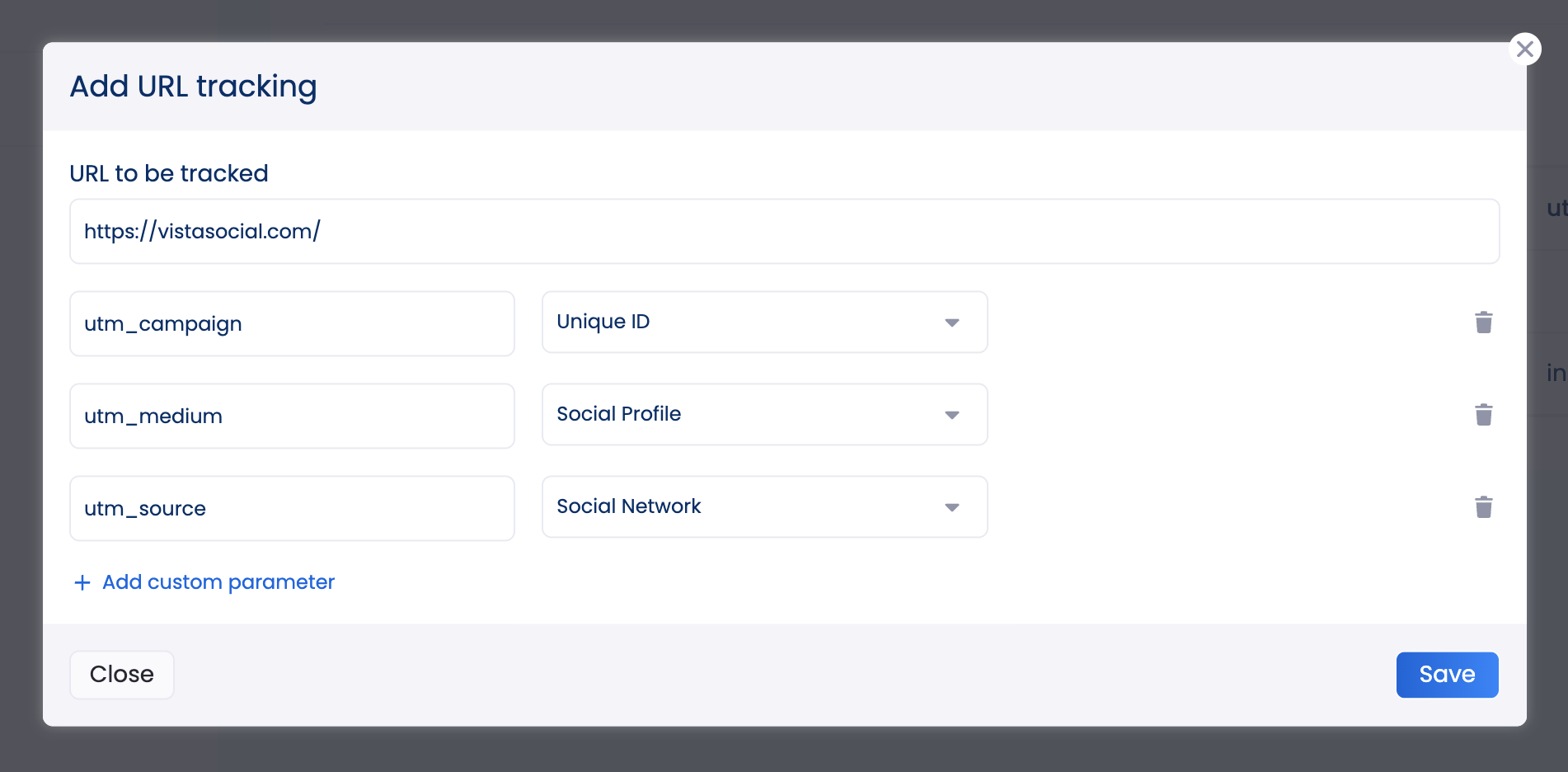
Now each time you share that URL through Vista Social, the social network and other key tracking information will be automatically added so you can track your social efforts through Google Analytics.
Next, multi-touch attribution gives you the complete picture. Most people interact with your brand multiple times before buying, so track:
- First-touch attribution (how people first discover you)
- Last-touch attribution (final interaction before conversion)
- Linear attribution (equal credit to all touchpoints)
- Time-decay attribution (more credit to recent interactions)
Finally, social commerce tracking requires platform-specific setup:
- Instagram Shopping tags and checkout
- Facebook Shop integration
- TikTok Shopping partnerships
- Pinterest Product Rich Pins
Try Vista Social for Free
A social media management platform that actually helps you grow with easy-to-use content planning, scheduling, engagement and analytics tools.
Get Started NowStep 3: Calculate your social media investment
Time to add up what you’re actually spending. Most businesses underestimate their true social media costs.
First, team time and salary costs often represent your biggest investment:
- Content creators and designers (include planning, creation, and revision time)
- Community managers and customer service reps
- Social media managers and strategists
- Account managers who oversee social campaigns
Pro tip: Calculate fully-loaded hourly rates including benefits, not just base salaries.
Second, content creation and production expenses:
- Photography and videography
- Graphic design tools and software subscriptions
- Stock imagery and music licensing
- Props, equipment, and studio rental
- Freelancer and contractor fees
Third, advertising spend and promoted content:
- Platform advertising costs (Facebook ads, Instagram promotions, etc.)
- Influencer partnership fees
- Sponsored content and brand collaborations
- Social media contest prizes and giveaways
Finally, tools and platform subscription costs:
- Social media management platforms
- Analytics and reporting tools
- Design software subscriptions
- Social listening and monitoring tools
Step 4: Measure and track returns
Now for the fun part—tracking what you’re getting back from all that investment.
First, direct revenue attribution works best for e-commerce and businesses with online sales:
- Use Google Analytics to track social media conversions
- Set up goals for different types of valuable actions
- Monitor social commerce sales through platform analytics
- Track discount code usage from social campaigns
Second, indirect value measurement helps service businesses and B2B companies:
- Calculate the value of leads based on historical conversion rates
- Track how social media affects sales cycle length
- Monitor customer lifetime value for social media-acquired customers
- Measure brand equity improvements through surveys and studies
Finally, long-term brand value assessment captures social media’s biggest benefits:
- Track organic search growth for branded terms
- Monitor customer retention rates for social vs. non-social customers
- Measure word-of-mouth referrals and customer advocacy
- Calculate the value of user-generated content and social proof
Step 5: Analyze and optimize performance
Regular analysis turns your data into actionable insights for better results.
First, monthly performance reviews should focus on:
- Which content types drive the best ROI
- What posting times and frequencies work best
- Which platforms deliver the highest-quality traffic
- How social media attribution compares to other channels
Next, quarterly strategy adjustments based on deeper analysis:
- Reallocate budget toward highest-performing platforms
- Double down on content formats that drive conversions
- Test new platforms or strategies based on audience behavior
- Update attribution models based on customer journey insights
Finally, continuous optimization tactics:
- A/B test different call-to-action phrases
- Experiment with posting schedules and content mix
- Test various UTM naming conventions for better tracking
- Refine targeting based on high-converting audience segments
To help out, many social media management platforms offer analytics features that help you track and analyze your ROI metrics.
One such platform is Vista Social.
Our tool brings all your social media reporting and metrics into one dashboard and report. It gives you a comprehensive view of your content performance, audience engagement, reach, and ROI (among others).
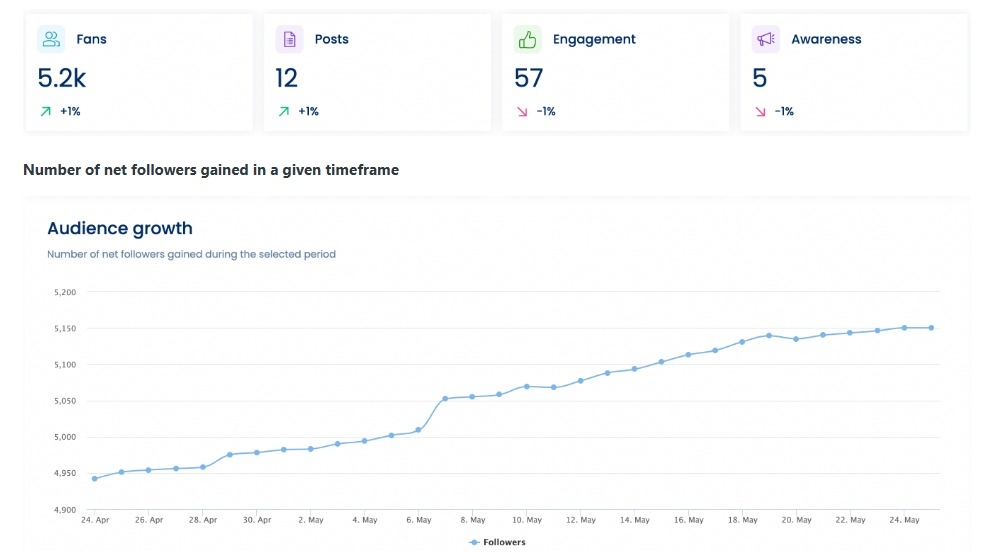
Vista Social’s social media analytics feature lets you customize what you and your clients want to see in the reports to track and measure ROI.
The report builder allows you to create custom reports to save as templates. Customize the report by specific metrics you want to include, such as social media ROI metrics.
Other customization options include:
- Adding a cover page
- Selecting the linked social media profiles to pull data from
- Adding text for each section
- Renaming the metrics
- Hiding sections the sections you want to exclude
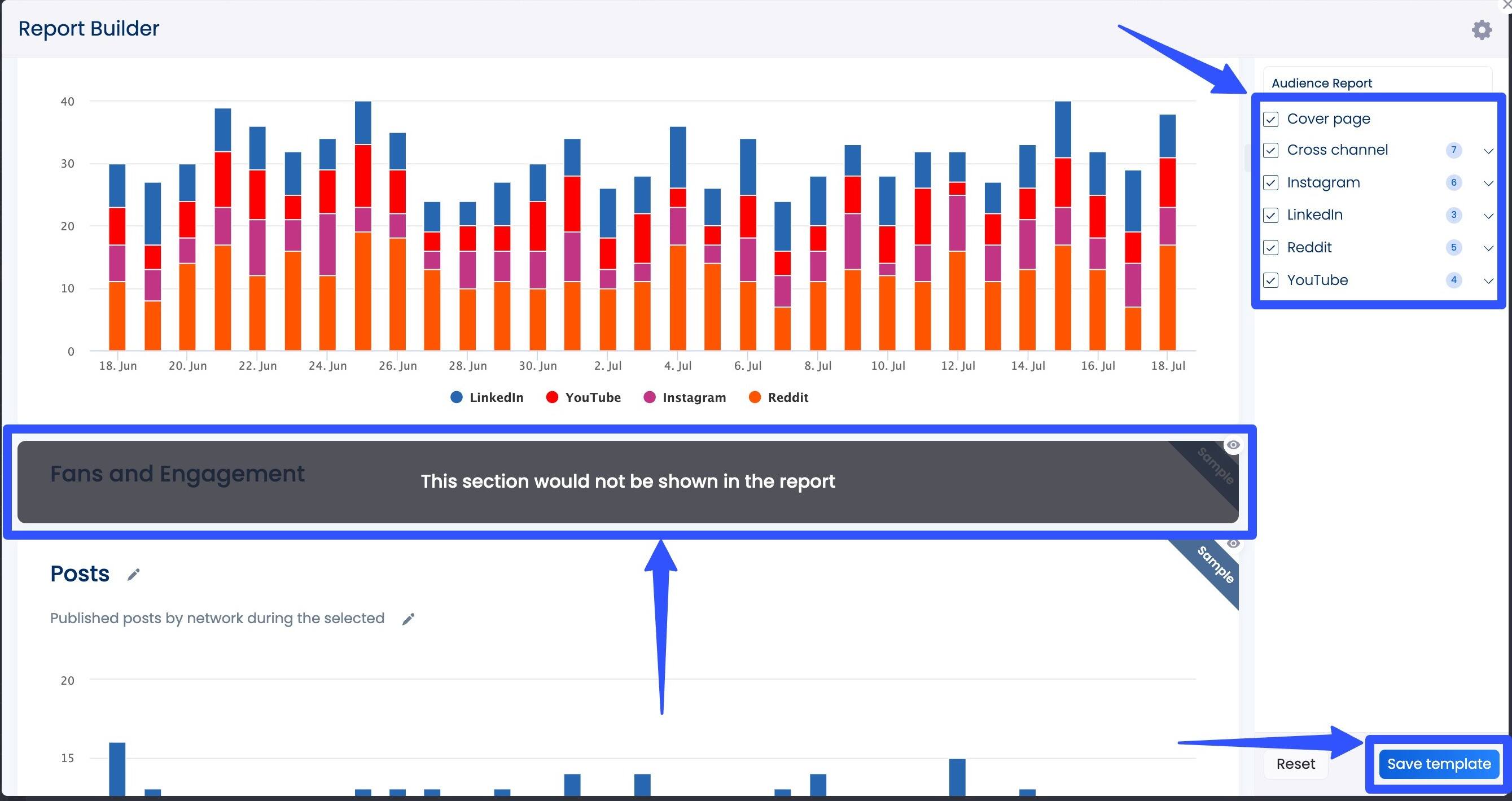
Save the template and run the report by selecting the template and date range and downloading a PDF version that will be sent to your email.
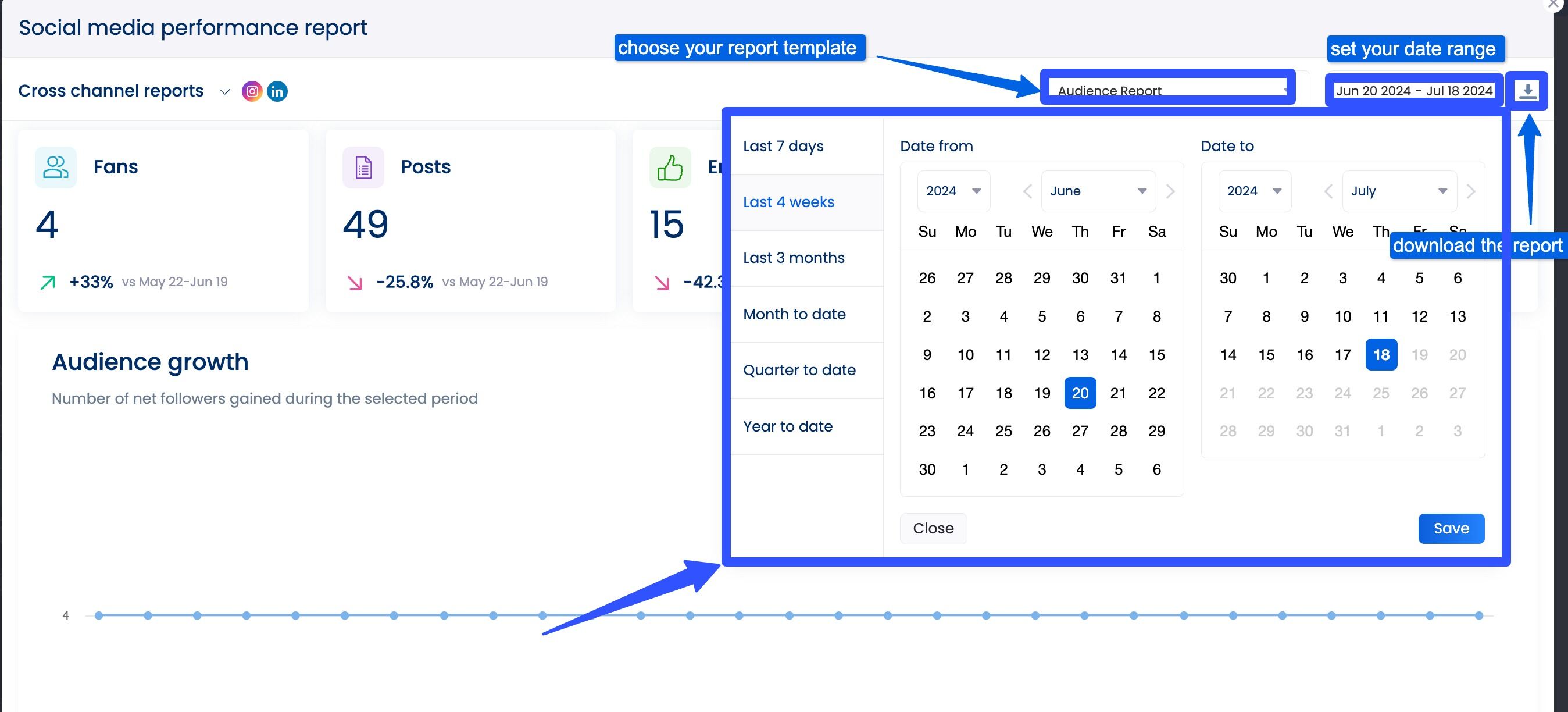
Vista Social also lets you run and schedule social media analytics reports on your clients’ connected profiles.
Select the report you want to run, then set a schedule to send it automatically to your team and clients.
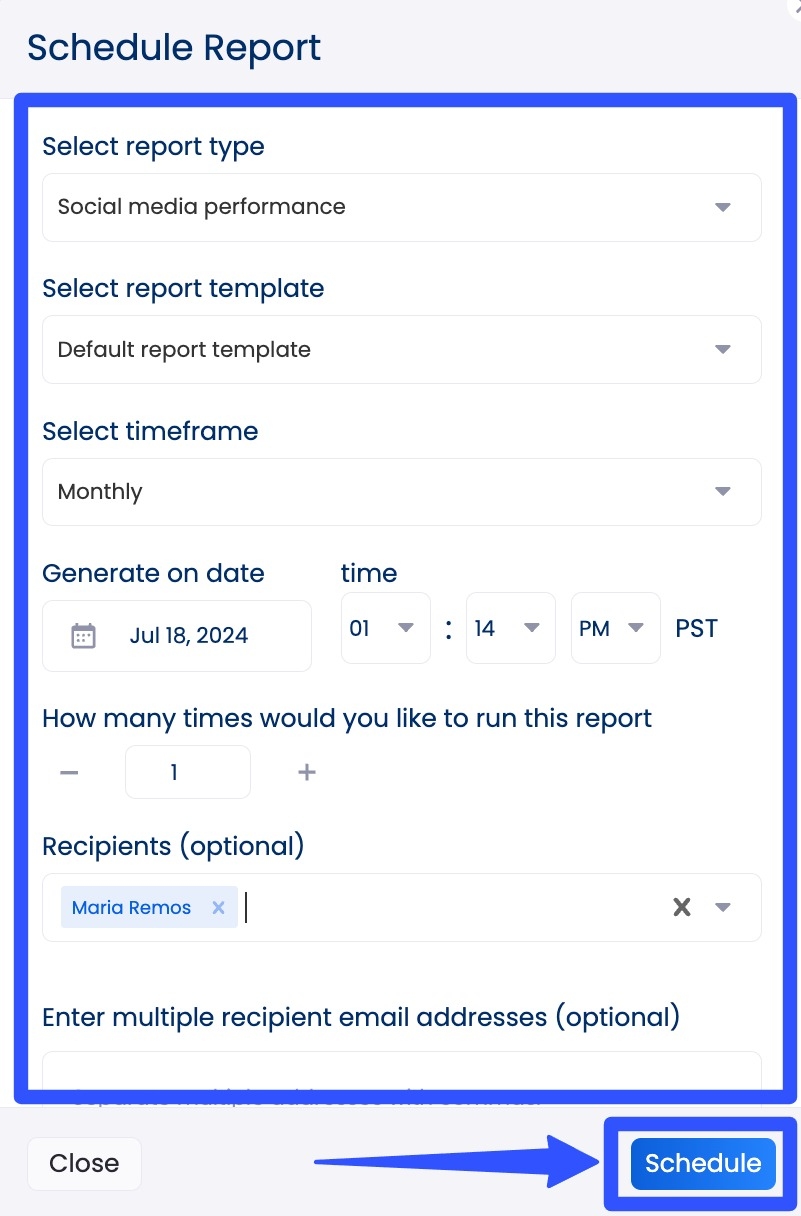
Set the time frame, the date to run the report, and the frequency.
You can add email recipients where the reports will automatically be sent once available.
This way, everyone gets regular updates, making social media ROI tracking and analysis hassle-free and efficient.
The platform also lets you view the stats of each client’s published post, including reach, impressions, likes, total saves, and comments.
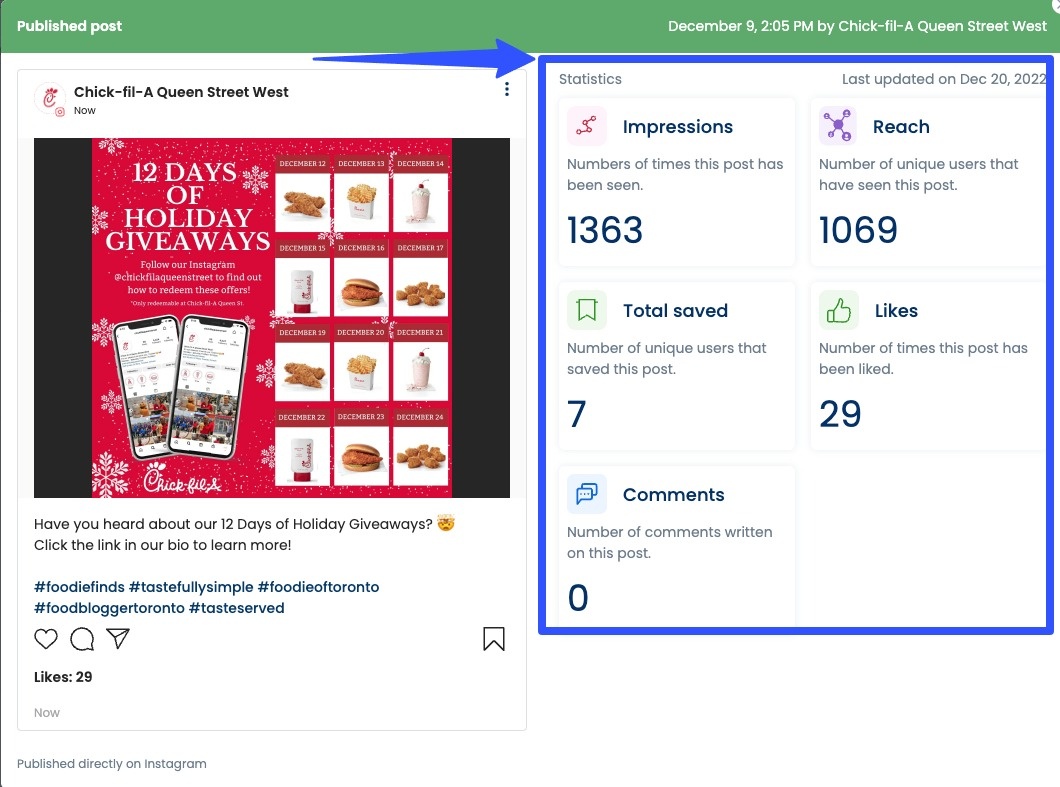
Important note: Vista Social syncs and refreshes this post statistics data every five to six hours.
Vista Social eliminates manual social media ROI tracking and analysis, allowing you to quickly and easily gain actionable insights.
The platform offers other robust features, from social media publishing and content scheduling to engagement management.
Vista Social also has AI capabilities. Its ChatGPT-powered AI Assistant can instantly generate and improve post captions, hashtags, and message replies, saving you time and effort.
Track and grow social media ROI like a pro
While tracking and growing your social media ROI isn’t without challenges, the process can be smooth and effective with the right strategies and tools.
Use the best tool to master tracking and growing social media ROI.
Leverage Vista Social’s robust social media analytics and reporting features for seamless ROI tracking, so you can gain insights to help drive growth quickly.
Create your FREE Vista Social account and have the social media platform do the heavy lifting.
About the Author
Content Writer
Jimmy Rodela is a social media and content marketing consultant with over 9 years of experience, with work appearing on sites such as Business.com, Yahoo, SEMRush, and SearchEnginePeople. He specializes in social media, content marketing, SaaS, small business strategy, marketing automation, and content development.
Read with AI
Save time reading this article using your favorite AI tool
Summarize with AI
Never Miss a Trend
Our newsletter is packed with the hottest posts and latest news in social media.
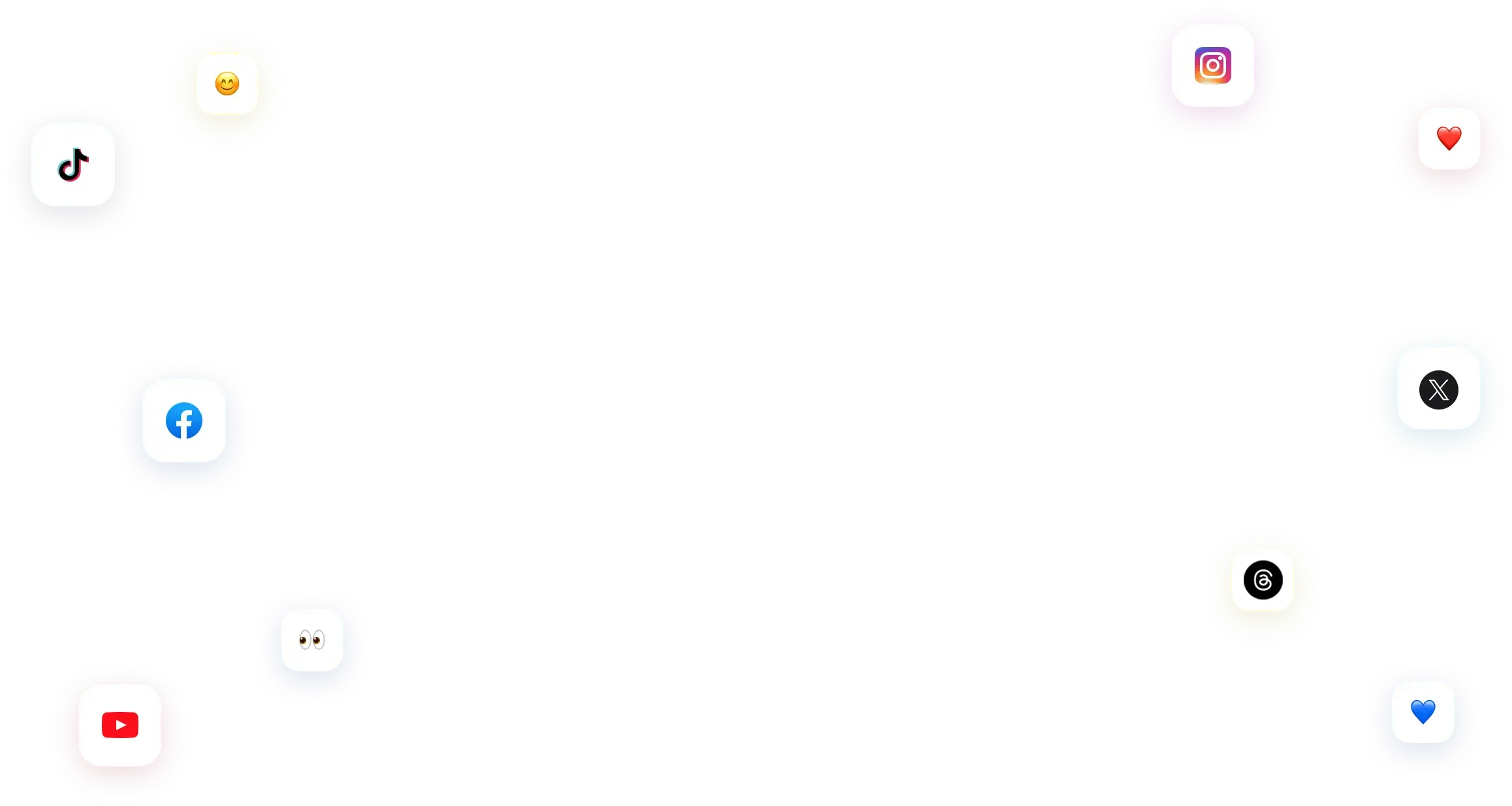
You have many things to do.
Let us help you with social media.
Use our free plan to build momentum for your social media presence.
Or skip ahead and try our paid plan to scale your social media efforts.
P.S. It will be a piece of cake 🍰 with Vista Social
Subscribe to our Newsletter!
To stay updated on the latest and greatest Social Media news. We promise not to spam you!

